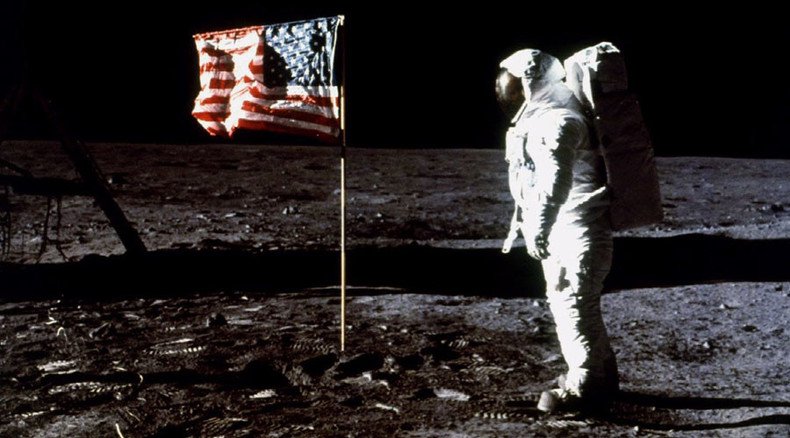NASA-funded study may clear way for human return to Moon – and Mars

A new study sponsored by NASA argues that the space agency could send humans back to the moon in less than a decade and establish a permanent lunar base just 10 years after that. Additionally, it states all of this could be done on NASA’s current budget.
If done successfully, the strategy could even help send humans to Mars and reduce the cost of manned space missions by “by a factor of 10.”
According to the new study conducted by NexGen Space, planning an excursion to the lunar surface doesn’t have to require lawmakers to authorize a surge in spending if NASA continues to expand its cooperation with private space companies such as SpaceX, the United Launch Alliance and Orbital ATK.
In fact, this public-private cooperation is the lynchpin to the whole strategy, which was outlined by former NASA engineers and astronauts, as well as members of the private spaceflight industry. Already, NASA is saving significant amounts of money by using a company like SpaceX to resupply the International Space Station, the Verge reported. Whereas previously it would spend between $46,000 and $60,000 per kilogram to ship supplies up to the station, SpaceX is charging only $4,750.
As noted by the Verge, newer models of SpaceX rockets such as the Falcon9 will keep costs for NASA at about the same level, if they’re not even cheaper. If that’s the case, the space agency can continue to save large amounts of cash on resupply missions and divert that money towards other objectives.
#OTD in 1969, one giant leap for mankind was taken when the Apollo 11 crew landed on the Moon http://t.co/9XC7OqpZKvpic.twitter.com/iWKZFQhCBO
— NASA (@NASA) July 20, 2015One way NASA could reach the moon in five to seven years, as the study outlines, is to support two competing private space companies in their efforts to build spacecraft that can transport humans. This would cost about $10 billion total – or $5 billion for each competitor – and keep the agency within the confines of its current budget. If NASA can get private companies to haul astronauts to the moon, it can cut costs further by limiting the number of launches of its planned Space Launch System. This would reduce the cost and risk of the SLS program but allow NASA and its partners to keep improving the technology needed for manned space missions.
“The Space Frontier Foundation supports and recommends public-private partnerships in all proposed human spaceflight programs in order to reduce costs and enable these missions that were previously unaffordable,” said Space Frontier Foundation Chairman of the Board Jeff Feige in a statement. “This is the way that America will settle the final frontier, save taxpayers money and usher in a new era of economic growth and STEM innovation.”
Once back on the moon, the study argues a lunar base capable of housing four astronauts can be set up in 10-12 years for a total of $40 billion.
READ MORE: SpaceX rocket to ISS disintegrates 2 minutes after launch (VIDEO)
A return trip to the moon would be beneficial for NASA, since it would test out new technology that could be used for an eventual mission to Mars. Under the study’s guidelines, establishing a lunar base would come with the task of mining the moon for hydrogen that could be converted into a propellant for spacecraft.
This fuel would then be sent into orbit around the moon, waiting for spacecraft in need to stop by and replenish their fuel. All told, “these commercial fuel depots in lunar orbit have the potential to cut the cost of sending humans to Mars by more than $10 billion per year,” said the Space Frontier Foundation, which participated in the study, in a statement.
Of course, whether or not such a plan works depends largely on the ability of private companies to consistently launch their spacecraft safely and successfully. After a string of successful launches, SpaceX saw its ISS-bound unmanned Falcon 9 rocket explode soon after it launched this past June. Last year, an unmanned Antares rocket from Orbital also exploded just a few seconds after taking off.












